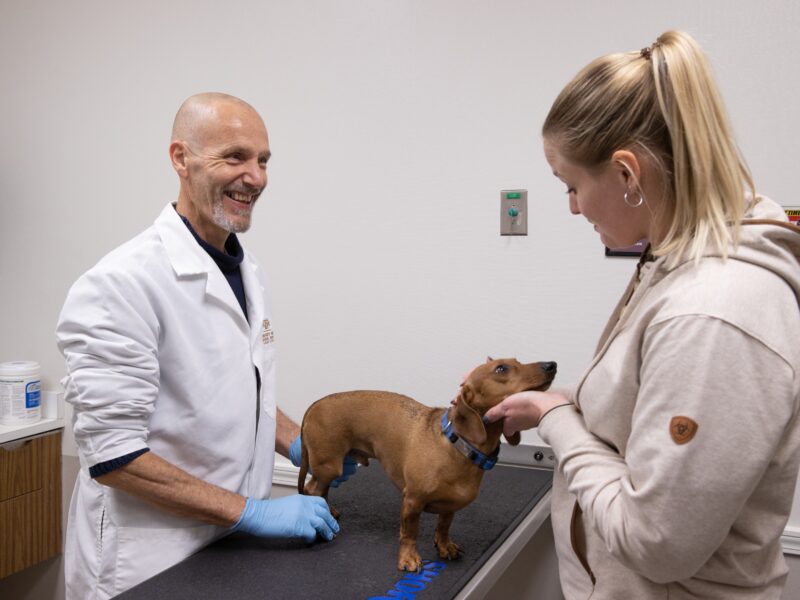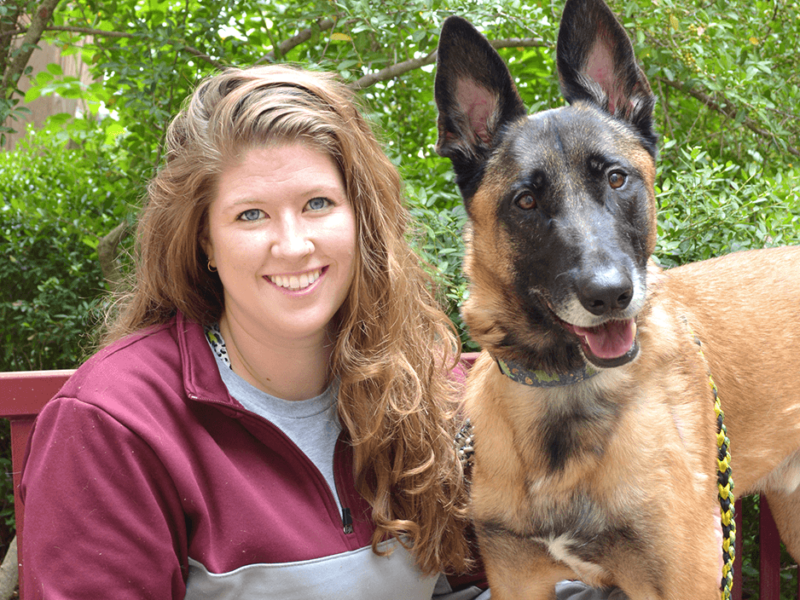Beefing Up Cattle

Many American beef producers raise Angus-dominated herds, but as worldwide temperatures increase, there will be an increased need for tropically adapted animals. Brahman cattle do well in hot, humid climates, but they are often criticized for their negative and aggressive reactions to humans.
Crossbred cattle in the Gulf Coast states are part Brahman, but research about Brahman genetics and molecular measurements is limited, said Dr. Tom Welsh, a professor who holds a dual appointment in the Texas A&M College of Veterinary Medicine & Biosciences’ (CVM) Department of Veterinary Integrative Biosciences (VIBS) and the College of Agriculture & Life Sciences’ Department of Animal Science.
“If climate change occurs as predicted, we will have a greater and greater dependence on tropically adapted livestock,” Welsh said. “Brahman cattle have important genes to contribute to adaptability to heat, humidity, and parasites. Brahman are important, they’re different, and they’re going to be even more important, at least as contributors to cross-breeding.”
Most of the research from Midwest schools use dairy or temperate beef breeds, but these findings do not often translate to Brahman cattle, said Welsh.
To fill this gap, Welsh and Dr. Ronald Randel use the purebred Brahman herd at the Texas A&M AgriLife Research & Extension Center at Overton, Texas to focus on how stress during pregnancy affects the health and productivity of Brahman offspring.
With funding from Texas A&M’s One Health Initiative grant, Welsh was part of a larger team that looked at how transportation during pregnancy affects cows’ offspring.
They found that the prenatally stressed calves were more excitable, reactive, and aggressive toward humans, and prenatally stressed male calves also had higher blood levels of cortisol, a hormone that is released in response to a stressful situation and is also often called the fight-or-flight hormone.
Increased production of cortisol is associated with decreased immunity in people and cattle.
“Stress responsiveness is negative to productivity, and prenatal stress supposedly leads to altered behavior, more active adrenal systems, and more stress response,” Welsh said. “What we need to determine is if the cattle are more or less capable of mounting an immune response if they’ve been prenatally stressed.”
Welsh co-authored a paper that used the same calves from the One Health Initiative grant. This project also found that cortisol and activity level were elevated in prenatally stressed calves, while also indicating that cells in prenatally stressed calves were less able to signal for help when fighting off infections.
Welsh, Randel, Penny Riggs, and David Riley at Texas A&M AgriLife Research recently received funding from the U.S. Department of Agriculture to focus on the use of blood cells as a surrogate measurement for determining how specific tissues or organs respond to stress. The implications of this research could mean that DNA from blood cells could be used to help predict future resistance to respiratory disease, according to Welsh.
These samples could be taken from young animals, so a producer would not have to wait and raise a calf until maturity to see how it will respond to stress. Choosing which calves will be the most productive is an economical decision that every producer must make.
Recently, Welsh applied for funding to investigate the effects of prenatal stress on telomere length. Telomeres on the ends of the chromosomes protect DNA when a cell divides. Telomere length decreases as aging increases, and stress seems to accelerate telomere shortening, Welsh said.
Along with health impacts, Welsh’s research also has economic impacts. Welsh aims to determine if telomere length can be used to predict the longevity of a productive animal in a herd. A cow needs to produce four to six calves before she begins to bring a profit to the producer.
Cattle producers — specifically those in West Texas — receive cattle across the Gulf Coast, and these cattle often have some portion of Brahman to improve their adaptation to hot, humid climates. They are often transported multiple times before reaching their destination, and cattle from different producers are often mixed together and may be exposed to other animals harboring viral or bacterial pathogens.
During transportation, cattle may have inadequate access to or dislike their new food or water, which may cause cattle to refuse to eat or drink, resulting in dehydration. The stress from multiple transportations coupled with stress from decreased food or water intake can decrease cattle’s ability to fight off infection, Welsh said.
Determining how Brahman-cross cattle respond to stress and being able to predict their respiratory response to stress would allow West Texas cattle producers to receive healthier calves, Welsh explained. Receiving healthier calves would mean producers would be able to avoid giving cattle antimicrobials, and antimicrobial resistance in beef cattle is a public health concern.
Being able to have markers for stress responsiveness would allow producers to select cattle that tolerate stress better. Animals that respond better to stress are more productive, so Welsh’s research could lead to cattle that are healthier, require fewer antibiotics, and have a greater production yield.
Welsh did not grow up around cattle but was exposed to agriculture through 4-H and FFA while in school. He was exposed to the research process when he joined Dr. Bryan Johnson’s lab at North Carolina State during his undergraduate career.
The experience allowed him to see that science depends on curiosity. Not only does science require curiosity; it also should include collaboration, Welsh said.
“Collaboration expands the impact of the research, expands the depth with which one can investigate a question,” he said.
The beef industry is a significant component of U.S. agriculture, supplying nutrient-dense food for domestic consumption and for export to international customers. About 45 percent of the nation’s beef cows, the primary source of the calves that enter the food chain via the Texas and Oklahoma feedlots, live in Oklahoma and Texas.
To improve the health and feedlot performance of calves from the Gulf Coast and southeastern states, Welsh and Randel developed an interstate collaborative research team with CVM’s Dr. Sara Lawhon; Drs. Scott Willard and Rhonda Vann, of Mississippi State University; and Drs. Nicole Burdick Sanchez and Jeff Carroll, of the USDA Agricultural Research Services in Lubbock, Texas.
Through the team’s research projects, undergraduate, graduate, and veterinary students from West Texas A&M, Texas A&M, Texas Tech, and Mississippi State have gained experience with interdisciplinary teams.
This story by Ashli Villarreal originally appeared on the CVM website.





